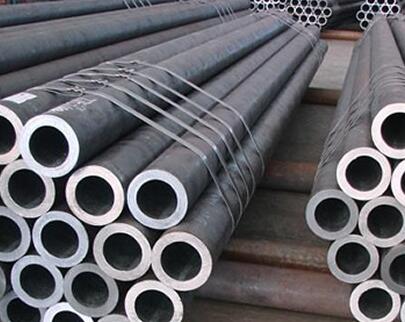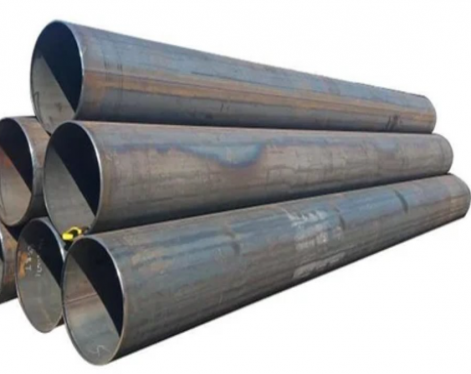The so-called carbon steel pipe actually refers to the fact that the mechanical properties depend on the carbon content in the steel pipe. Generally, steel pipes that do not add a large amount of alloy elements are also called ordinary carbon steel pipes or carbon steel pipes, which refer to iron-carbon alloy pipes with a carbon content of less than 2%. In addition to carbon, carbon steel pipes also contain a small amount of silicon, manganese, sulfur and phosphorus. Generally, the higher the carbon content in the carbon steel pipe, the greater the hardness and the higher the strength, but the lower the plasticity.
Advantages of carbon steel pipe
1. Carbon steel pipe can get higher hardness and better wear resistance after heat treatment.
2. The hardness of carbon steel pipe in the annealed state is very moderate, and it also has good machinability.
3. The raw materials of carbon steel pipes are very common, easy to obtain, and the production cost is relatively low.
Disadvantages of carbon steel pipe
1. The thermal hardness of carbon steel pipe will be poor, because when the working temperature of the tool is greater than two hundred degrees, its hardness and wear resistance will drop sharply.
2. The hardenability of carbon steel pipe is very low. The diameter of the fully hardened steel pipe is generally about 15-18 mm when it is water quenched, and the diameter or thickness is only about 6 mm when it is not quenched, so it will be easier to deform and crack.

What are the classifications of carbon steel
1. According to the purpose, carbon steel can be divided into three categories: carbon structural steel, carbon tool steel and easy-to-cut structural steel.
2. According to the smelting method, carbon steel can be divided into three types: open hearth furnace steel, converter steel and electric furnace steel.
3. According to the deoxidation method, carbon steel can be divided into boiling steel, killed steel, semi-killed steel and special killed steel, which are represented by codes F, Z, b and TZ respectively.
4. According to the carbon content, carbon steel can be divided into three categories: low carbon steel, medium carbon steel and high carbon steel.
5. According to the content of sulfur and phosphorus, carbon steel can be divided into ordinary carbon steel with higher content, high-quality carbon steel with lower phosphorus and sulfur content, high-grade high-quality steel with lower phosphorus and sulfur content, and finally a special high-quality steel.
Advantages of carbon steel pipe
1. Carbon steel pipe can get higher hardness and better wear resistance after heat treatment.
2. The hardness of carbon steel pipe in the annealed state is very moderate, and it also has good machinability.
3. The raw materials of carbon steel pipes are very common, easy to obtain, and the production cost is relatively low.
Disadvantages of carbon steel pipe
1. The thermal hardness of carbon steel pipe will be poor, because when the working temperature of the tool is greater than two hundred degrees, its hardness and wear resistance will drop sharply.
2. The hardenability of carbon steel pipe is very low. The diameter of the fully hardened steel pipe is generally about 15-18 mm when it is water quenched, and the diameter or thickness is only about 6 mm when it is not quenched, so it will be easier to deform and crack.

What are the classifications of carbon steel
1. According to the purpose, carbon steel can be divided into three categories: carbon structural steel, carbon tool steel and easy-to-cut structural steel.
2. According to the smelting method, carbon steel can be divided into three types: open hearth furnace steel, converter steel and electric furnace steel.
3. According to the deoxidation method, carbon steel can be divided into boiling steel, killed steel, semi-killed steel and special killed steel, which are represented by codes F, Z, b and TZ respectively.
4. According to the carbon content, carbon steel can be divided into three categories: low carbon steel, medium carbon steel and high carbon steel.
5. According to the content of sulfur and phosphorus, carbon steel can be divided into ordinary carbon steel with higher content, high-quality carbon steel with lower phosphorus and sulfur content, high-grade high-quality steel with lower phosphorus and sulfur content, and finally a special high-quality steel.









